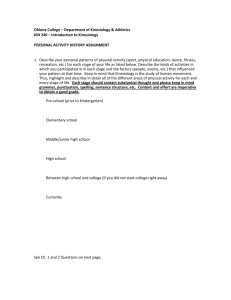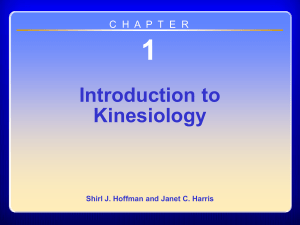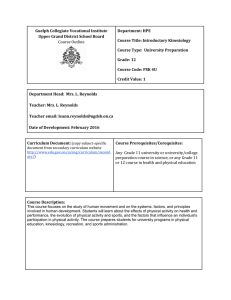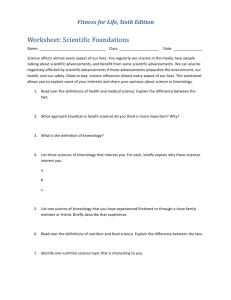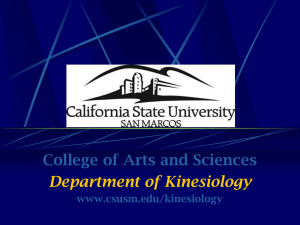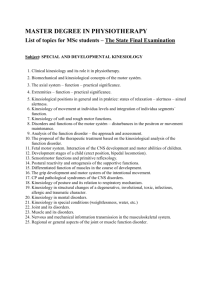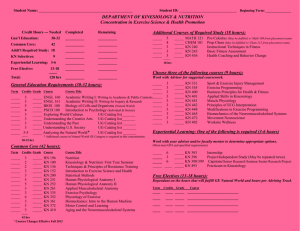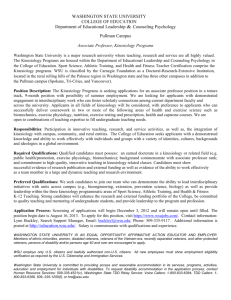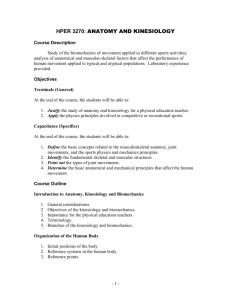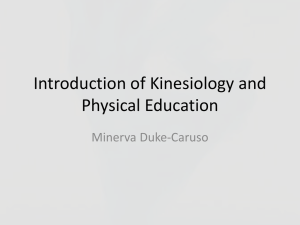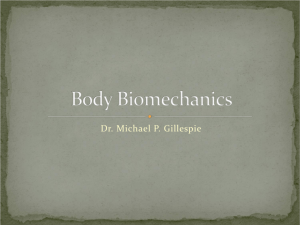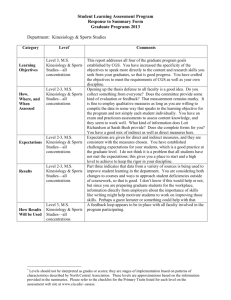Kinesiology & Biomechanics: Intro, Exercise, Skilled Movement
advertisement
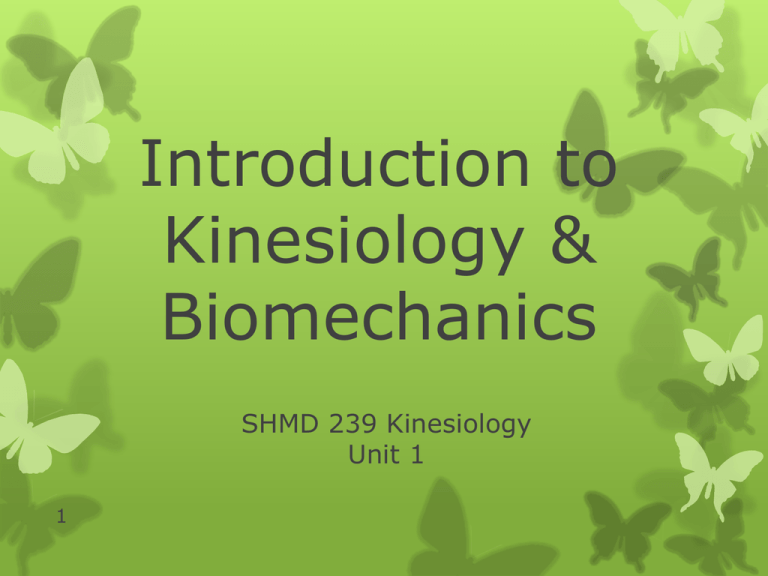
Introduction to Kinesiology & Biomechanics SHMD 239 Kinesiology Unit 1 1 Definition of Kinesiology: The discipline or body of knowledge that studies physical activity through performance, scholarly analysis and professional practice 2 The Focus of Kinesiology: Kinesiology focuses on two general categories or forms of physical activity: 1. Exercise 2. Skilled Movement 3 The Focus of Kinesiology (continues) Exercise: Improve or regain performance, Health, or Body appearance Exercise can be divided into 3 major categories: 4 1. Training Exercise performed for the express purpose of conditioning your body to improve athletic or other types of performance Careers: Conditioning specialists with university or 5 professional sport teams 2. Health Related Exercise specifically to develop or maintain a sound working body, free of disease and able to perform daily tasks and deal with emergencies 6 Careers: Fitness leaders and personal trainers 3. Therapeutic Exercise performed to restore capacities previously acquired or developed that have been lost because of injury, disease, or behavioural patterns 7 Careers: Athletic trainers, physical therapists, or biokineticists The Focus of Kinesiology (continues) Skilled Movement: Accuracy of direction Force Rhythm or timing Skilled movement can be divided into 2 categories: 8 1. Sport A form of physical activity in which a person performs skilled movements to achieve a goal in a manner specified by rules, usually in competitive contexts 9 2. Developmental Skills Skills performed in non-sport settings 10 Skipping, throwing, hopping, etc. Definition of Biomechanics: Biomechanics is concerned with internal & external forces acting on the human body and on implements used during sport (bats, balls, etc.) and the effects produced by these forces 11 What is biomechanics used for? Analyse sports techniques 12 Why? It allows athletes or coaches to improve performance or avoid injury 13 How? Observing performance Evaluating & comparing Instructing on improvement 14 End of Unit 15
